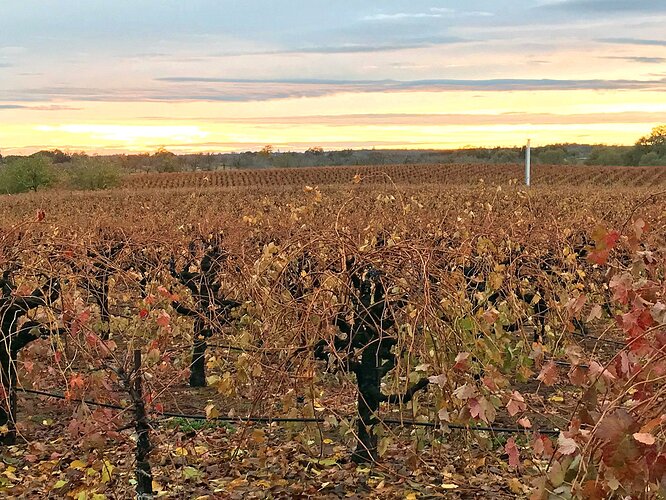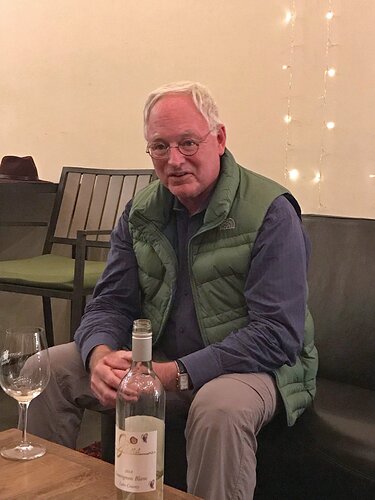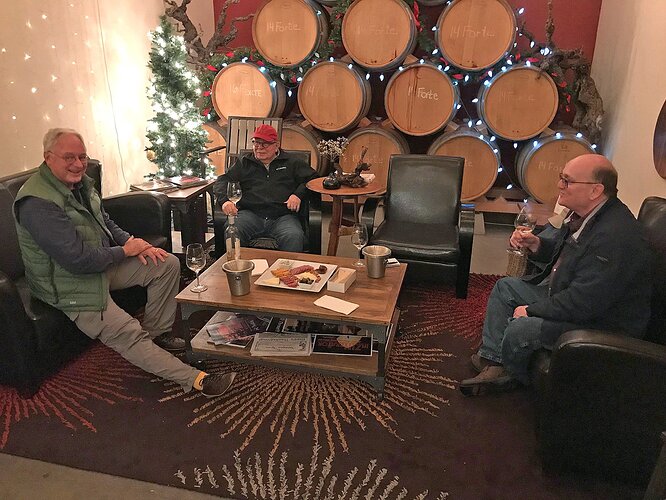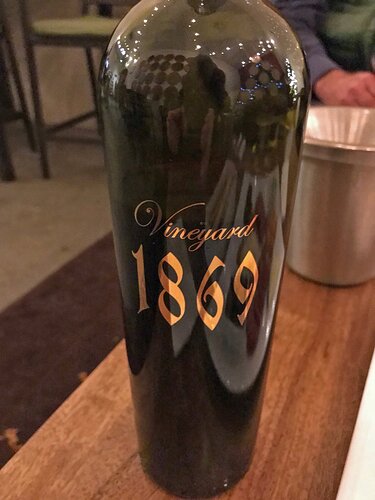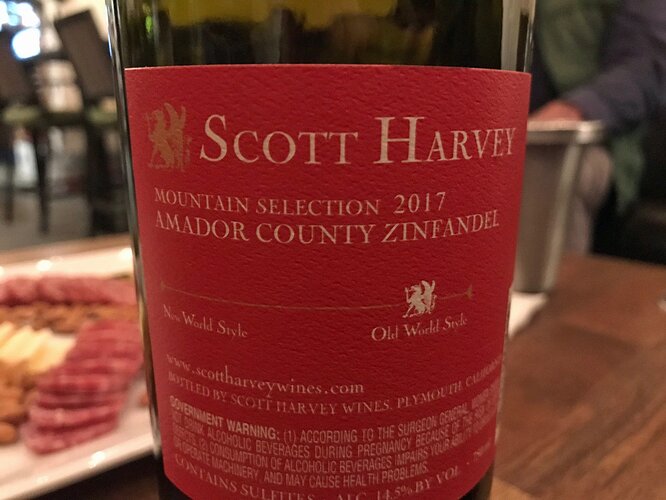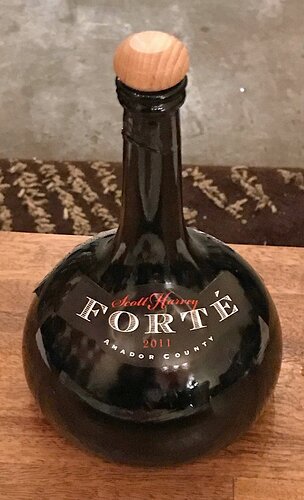Sierra Foothills Wine Visits – December 2019 – Part 1
I’ve posted a portion of Part 1 of a report on an early December three-day wine tour with a few friends to Sierra Foothills wineries and tasting rooms. Part 2 will be following soon. The full version of this report is on the Grape-Nutz.com website:
Sierra Foothills Wine Visits – December 2019 – Part 1
Part 1 includes:
La Clarine Farm
Cedarville Vineyard
Sobon Estate
Wilderotter Vineyard
Vino Noceto
Scott Harvey Wines
Late afternoon at Cooper Vineyards in Amador County’s Shenandoah Valley
2019 marked the twelfth consecutive year that I’ve made an autumn wine-tasting trip to the Sierra Foothills. Most have been day-trips from the Bay Area – the two-hour drive each way makes for a long and somewhat tiring day by the time it’s all done. So this year I decided to stretch the trip to three days, and to invite Eric Anderson – the head Grape-Nutz nut himself – and his friend Michael Poston. Michael has been on several of our wine tours in recent years so he knew what he was getting himself into!
We compared ideas for which wineries we wanted to visit and made appointments with vintners at most of them (though nearly all of the wineries we visited have tasting rooms with regular visitor hours too). Even with three days of tasting on our agenda, we decided that it might be too much to include wineries in Calaveras County on this trip, and we focused entirely on those in El Dorado and Amador counties, both to the north of Calaveras. Although most of the wineries on our schedule were ones we’d visited in the past, there were only a couple that I’d been to in the past few years, and Eric and Michael’s most recent trip to the area had been in 2012.
El Dorado generally has the higher-elevation vineyards of the two wine regions, with vineyards located throughout a number of areas north and south of Placerville at elevations of 2,200 to over 3,000 feet, with some lower-elevation sites in the Coloma area to the north. Decomposed granite soil is common to the area, much more so than throughout other winegrape-growing areas in California, and there are also volcanic and other types of soils. Amador is just south of El Dorado and most vineyards there are lower in elevation – generally from 1,200 to 2,000 feet with a few higher-elevation sites – so it tends to be warmer there. Much of the vineyard land is centered in the Shenandoah Valley and Fiddletown areas. There is granite-based soil there as well (Shenandoah Loam) and the area is known for its reddish volcanic soil.
We’d enjoyed visits at La Clarine Farm and Cedarville Vineyard – both in the Fair Play AVA of El Dorado County – earlier on our first day of wine touring, and then made quicker drop-in stops at Sobon Estate, Wilderotter Vineyard, and Vino Noceto in Amador County’s Shenandoah Valley before our last appointment of the day.
Scott Harvey Wines
Our final stop of the day was a visit to Scott Harvey Wines, just down the road from Vino Noceto. I knew that Scott Harvey was one of the modern pioneers of Amador County wine and I’d tasted a handful of his wines in the past, but I’d never been to the tasting room before and I don’t believe I’d ever met him. As Eric, Michael, and I walked into the tasting room, Scott was right there to welcome us in. After a quick round of introductions, he led us to a table in the back part of the tasting room and we all settled in to the comfortable seats around it as he told us a little about himself and the winery.
Scott Harvey
Scott has a long history in the Sierra Foothills. Born in Germany to American parents, he grew up in El Dorado County and went to high school in Placerville. As a high school exchange student in the Rhineland Pfalz region of Germany, Scott started to develop an interest in wine. After moving back to California and attending Sacramento State University, and working in 1974 at Monteviña (now Terra d’Oro) Winery in Shenandoah Valley, he relocated to Germany once again to undergo more serious education in winemaking there. Scott developed a particular love of Riesling while in Germany, a variety he still continues to champion. Returning to California, by 1978 he had become the winemaker at nearby Story Winery at the age of just 23.
Scott later became the winemaker and general manager of Santino Winery, where he made many acclaimed wines – notably some excellent Zinfandels – as he did later at that winery’s successor, Renwood. He made a move to Napa Valley in 1996, where he partnered with Dr. Richard Peterson at Folie à Deux Winery, creating their popular “Ménage à Trois” line of wines while he was there. He was able to retain his connection to the Sierra Foothills there, bringing Amador County vineyard sources with him as well as an old Mendocino Riesling vineyard source.
When the Folie à Deux label was sold in 2004, Scott established Scott Harvey Wines with his wife Jana. Their venture is actually two labels – Scott Harvey and Jana – with the Scott Harvey label focusing on wines from Amador County while the Jana label includes wines from Napa Valley, Mendocino, and other locations. They used to make a Jana Riesling from Michigan (I recall this was quite good) but the logistics proved too difficult to continue with that wine. The winery now has a second tasting room along Main Street in Sutter Creek – which is becoming a magnet for wine tasting rooms – as well as their tasting room at the winery in Shenandoah Valley.
Scott began our tasting with a sparkling wine, a Jana NV Brut Blanc de Blanc. As with many small-production sparklers, this one was finished off-site at a facility specializing in sparkling wine production. Made from Chardonnay, this was bright and fresh, not as yeasty or complex as some sparklers but very pleasant and a good way to start our tasting. Next was the Jana 2018 Sauvignon Blanc, sourced from Lake County fruit, an often-overlooked growing region that is one of California’s best spots for this variety. This was made entirely in stainless steel with no malolactic fermentation, and bottled under screwcap. Grapefruit and herb aromas plus floral notes, balancing medium body with zippy acidity, and a long crisp finish.
Our next wine, the Scott Harvey 2017 “Vineyard 1869” Zinfandel, was sourced from one of California’s most historic vineyards, the Original Grandpère Vineyard in Shenandoah Valley. This is the oldest documented Zinfandel vineyard in the US, as it was mentioned in an 1869 deed, and the vines there are thought to date at least that far back. The vineyard has gone through a few different owners over the years, and there have been controversies over the use of the “Grandpère” name. The vineyard is currently owned by Scott’s ex-wife Terri, and his winery is one of only four getting the old-vine Zinfandel fruit from there. Aged mostly in neutral oak, this wine was a highlight of our tasting – floral and brambly notes combined with ripe wild berry and plum fruit, earth, black pepper, and spice. Medium body with a lively texture and finish, this really showed the best of old-vine Amador Zinfandel.
We continued with another Zin, the Scott Harvey 2017 “Mountain Selection” Zinfandel. Scott told us that he feels mountain fruit lends better acid and tannin structure to Zinfandel. He also pointed out an interesting feature on the back label of his wines – an Old World Style / New World Style scale. This shows the basic stylistic character of each wine, from a more elegant and refined “Old World Style” to a riper and bolder “New World Style.” While this wine showed a bolder fruit character than the “Vineyard 1869” Zin, it certainly was not overdone – and like the previous wine, it had brambly notes along with a bigger spice component, finishing with moderate tannins. Scott next poured us the Scott Harvey 2017 “J&S Reserve” Barbera. This variety has become one of Amador County’s hallmarks, and Scott feels that Amador will become known as the best Barbera region in the world. He noted that both Piemonte and Amador have granitic foothill geography, but the climate is different with Amador getting more sun, which benefits Barbera. Bright cherry and raspberry fruit, earth, good acidity with a lively mouthfeel and finish.
We returned to a Jana wine next, the Jana 2014 “Cathedral” Cabernet Sauvignon from Napa Valley near the southern edge of the Stags Leap District. On the more restrained side for a Napa Cabernet, this is just 13.5% alcohol. Dark berry, smoke, herbs, and a touch of sweet oak on the nose, medium-full bodied with the structure for further aging. Scott poured one more red for us, the Scott Harvey 2016 Petite Sirah, sourced from a rocky hillside site in Shenandoah Valley. This featured bold dark fruit, spice, and chocolate aromas, a rich texture with a firmly tannic finish – more time in the cellar should benefit this young Petite Sirah.
Scott completed our tasting by pouring us two sweet wines. First was the Jana 2013 “Angel Eis” – this is made in an icewine style (11% alcohol, 22% residual sugar) from Mendocino County Riesling grapes that were frozen before being pressed. Intense stone fruit aromas with floral notes, a viscous texture and long sweet finish, where the Riesling character came through most clearly. Our final wine of the day was the Scott Harvey 2011 “Forté.” A Port-style wine (20% alcohol, 8% residual sugar), this is a blend of 64% Touriga Nacional and 12% each Tinta Cão, Souzão, and Alvarelhão from DeWitt Vineyard in Shenandoah Valley. Ripe dark berry fruit and spice on the nose, medium sweet with a rich mouthfeel, and a lingering finish.
Additional Jana wines include Dry Riesling, “Tickle Me Pink” Rosé, Rosé of Barbera, and “One Last Kiss” red blend. Other Scott Harvey wines include Tempranillo, “J&S Reserve” Zinfandel, “Three Stags” red blend, “Cattedrale” Barbera, Toy Vineyard Barbera, “Mountain Selection” Barbera, “J&S Reserve” Syrah, and “Mountain Selection” Syrah. Scott also produces “Inzinerator” Zinfandel - a riper, bolder style.
Scott was a wonderful host for Eric, Michael, and me. Low-key and thoughtful, his long connection with the Sierra Foothills wine region was certainly on display as he spoke with us about his wines. I thought the highlights of our tasting with Scott were the 2018 Sauvignon Blanc, 2017 “Vineyard 1869” Zinfandel, 2017 “J&S Reserve” Barbera, and 2013 “Angel Eis,” though all of the wines we tried were quite good. Overall, the Jana and Scott Harvey wines strike a fine balance of displaying ripe California fruit while also exhibiting restraint and elegance. Although this was my first visit to Scott Harvey Wines, it will certainly not be my last, and a stop there is highly recommended.
